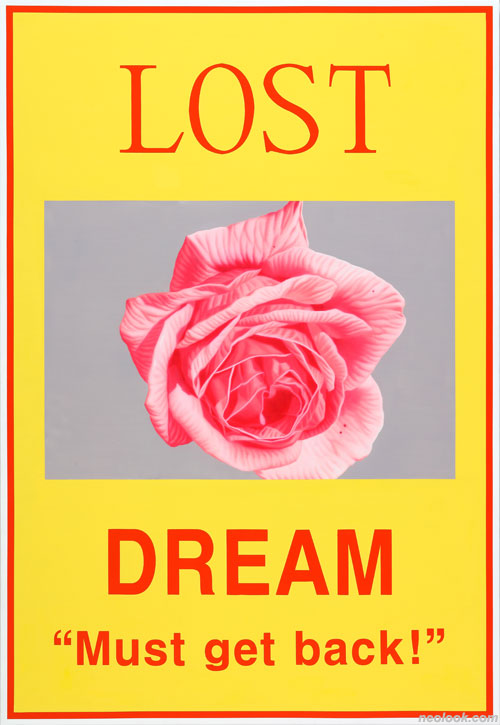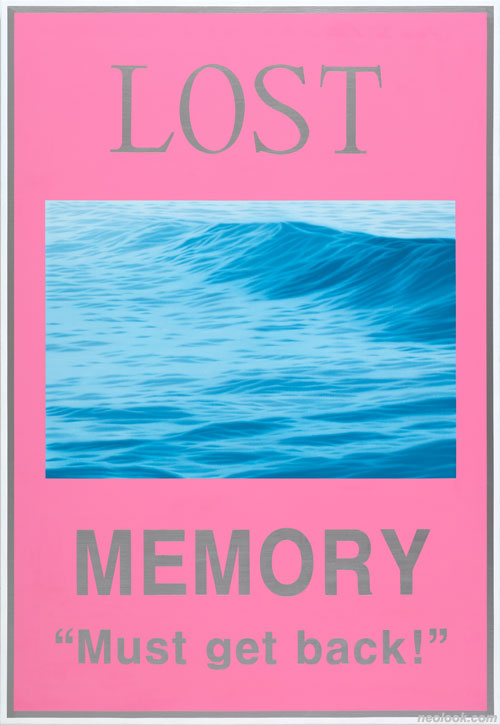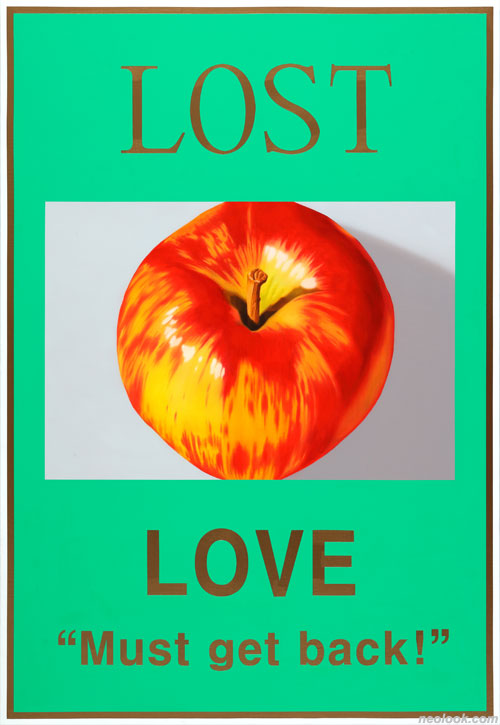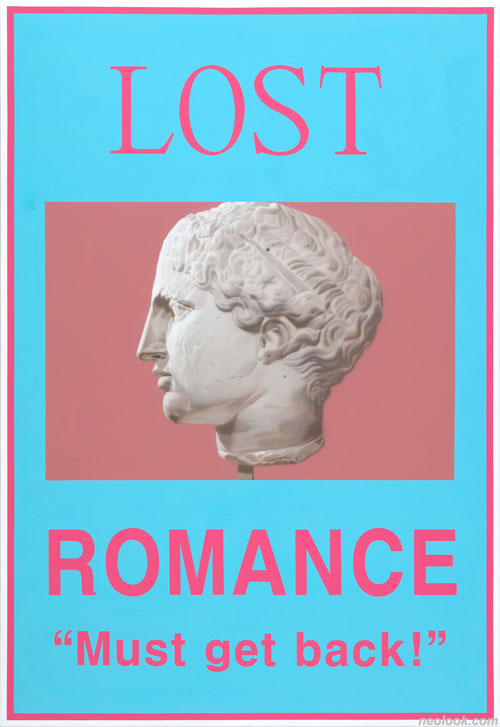- ● homepage
- ● archives
- ● restoration
- ● books
- ● big banners
- ● post board
- ■ neo's search
- ■ about us
- ■ 게재방법 안내
- 개인정보처리방침

- [email protected]
- Tel. 02_335_7922
- Fax. 02_335_7929
- 10:00am~04:30pm
- 월요일~금요일
- 3/3(월) 대체공휴일

이미지-時代의 斷想 Image-Fragment of the time
정영한展 / CHUNGYOUNGHAN / 鄭暎翰 / painting 2017_1213 ▶ 2017_1218
● 위 이미지를 클릭하면 네오룩 아카이브 Vol.20121025f | 정영한展으로 갑니다.
정영한 홈페이지_paintchung.cafe24.com
별도의 초대일시가 없습니다.
관람시간 / 10:00am~07:00pm
가나인사아트센터 GANAINSA ART CENTER 서울 종로구 인사동길 41-1(관훈동 188번지) 2층 제2전시실 Tel. +82.(0)2.736.1020 www.insaartcenter.com
일상의 신화 ● I. 2016년 이후 정영한은 「이미지-시대의 단상」 이라는 새 제명으로 새로운 회화 작업을 시도하고 있다. 또한 2005년부터 10년 이상 지속해 오고 있는 「우리시대 신화」 시리즈 역시 새로운 차원의 조형 방법을 도입함으로써 변화를 가하고 있다. 20회를 맞는 이번 전시회가 주목되는 이유는 최근 시도하고 있는 작품의 변화상을 종합적으로 살펴 볼 수 있을 뿐만 아니라 향후 그가 걷게 될 작품 세계의 향방을 가늠해 볼 수 있다는 생각 때문이다. 정영한이 한국 극사실 회화의 맥을 잇는 세대의 한사람이라는 점에서 그가 시도하는 실험의 내용을 분석하는 것은 나름 의미를 지닌다. 일견해 보자면 그의 변화는 표현 방식에서 찾아 볼 수 있다. 우선 「이미지-시대의 단상」 시리즈의 경우 시각 이미지를 드러내는 방식이 '타임즈' 따위의 대중잡지 표지나 '모바일 폰'의 화면 디자인을 차용하고 있다. 한편 「우리시대 신화」의 후속 시리즈는 두 개의 갈래로 나뉘는데, 하나는 디지털 카메라를 이용해 자신의 기존 작업 이미지를 촬영하고 컴퓨터로 편집한 후 프린터로 출력하는 작업이며, 또 하나는 역시 자신의 기존 작업에 표상된 특정 이미지를 3차원의 입체물로 모델링한 것이다. 작가는 전자와 후자에 각각 「Beyond the Myth」와 「Trans the Myth」라는 제명을 붙여 놓았다. 이상과 같은 두 그룹의 실험은 극사실 회화를 포함한 동시대의 시각문화 전반에서 제기되고 있는 원본과 복제, 실재와 허상 따위의 개념에 대한 비평적 성찰을 요구한다.

- 정영한_이미지-時代의 斷想 Image-Fragment of the time_ 캔버스에 유채, 아크릴채색_162.1×112.1cm_2017

- 정영한_이미지-時代의 斷想 Image-Fragment of the time_ 캔버스에 유채, 아크릴채색_162.1×112.1cm_2017

- 정영한_이미지-時代의 斷想 Image-Fragment of the time_ 캔버스에 유채, 아크릴채색_162.1×112.1cm_2017

- 정영한_이미지-時代의 斷想 Image-Fragment of the time_ 캔버스에 유채, 아크릴채색_162.1×112.1cm_2017

- 정영한_이미지-時代의 斷想 Image-Fragment of the time_ 캔버스에 유채, 아크릴채색_162.1×112.1cm_2017
II. 「이미지-시대의 단상」은 이미지와 단어를 화면에 함께 조합해 놓은 신작 시리즈다. 화면에 극사실적 기법으로 그려진 자연이나 사물들은 추상적 개념의 문자와 서로 어우러지면서 보는 이들에게 새로운 시각상(visual image)을 제공해 준다. 이 신작 시리즈에서 작가가 힘주어 내놓은 단어는 '상실(LOST)'이다. 의미론적 차원에서 상실이란 잃어버린 어떤 대상을 전제하는 문자라는 점에서 그의 그림은 '회복(get back)'을 원하는 작가의 의도를 암묵적으로 드러낸다. 이러한 역설적 의미가 생겨나게 되는 것은 문자와 함께 그려진 극사실적 이미지의 시각적 아우라 때문일 것이다. 그래서 정영한의 캔버스에 그려진 상실의 이미지는 섬세하면서 찬란하고 아름답다. 남다르게 치밀한 성품의 작가는 회복의 대상으로 제시한 추상적 개념의 문자를 일곱 개의 작품에 저마다 제시하고 각각의 하단에 다음과 같은 텍스트를 반복적으로 추가해 놓았다 : "Must get back!" ● 「이미지-시대의 단상」 시리즈에서 정영한이 채택한 일곱 개의 문자는 기억(MEMORY), 로맨스(ROMANCE), 시간(TIME), 희망(HOPE), 꿈(DREAM), 사랑(LOVE), 그리고 환상(FANTASY)이다. 이상적 가치가 고갈되어가는 현대사회에서 본래의 의미가 퇴색되어 버린 단어들이다. 고전주의에서 낭만주의에 이르는 시대를 풍미했던 단어들이었지만 자본과 대중문화가 지배하는 근대주의 이후 도전받기 시작해 현대에 이르러 변질되어버린 개념들이다. 1987년 발표된 무라카미 하루키의 소설 「상실의 시대」가 베스트 셀러가 된 이후, 우리는 바야흐로 상실의 시대를 살고 있다. 잃어버린 가치들을 찾아 나선 작가의 탐험은 캔버스라는 사각의 공간에 머무르지 않는다. 앞서 언급한 것처럼 작가의 화면 구성방식은 2016년에 처음 도입한 대중잡지 '타임즈'의 표지에서 2017년 '모바일 폰'의 차용으로 빠르게 변모하고 있기 때문이다. 동시대의 시각문화를 주도하는 매스 미디어 이미지의 차용에 의해 작가가 시도하는 상실 혹은 회복의 개념은 확대된 해석의 영역으로 미끄러져 간다. ● 정영한의 「이미지-시대의 단상」 시리즈에서 채택하고 있는 일곱 개의 상실 키워드에는 대부분 하나의 이미지가 등장한다. 기억=바다, 낭만=두상조각, 시간=신문, 희망=빙산, 꿈=장미, 사랑=사과, 그리고 환상=바다·장미 등의 조합이 그것이다. 하지만 캔버스에 그려진 문자와 이미지 사이에는 특정한 의미 구조가 주어져 있지 않다. 이는 작가가 자신의 노트에서 밝히고 있듯이 이미지 채집 과정에서 보여주는 작가의 무작위적 태도와 연관이 되어 있다 : "인터넷에서 떠도는 이미지, 잡지나 신문에서 보여 지는 이미지들을 무작위로 채집하고 저장해 두었다가 작품을 할 때면 하나씩 하나씩 올리는 과정을 겪는다". 대중적 매체에서 이미지를 차용하고 복제하는 방식은 그의 작업을 '팝아트'의 맥락에 포함시킬 수 있는 가능성을 제공하고 있다. 하지만 그의 작업을 팝의 범주로 제한하는 것은 무리가 있다. 대중적 이미지의 차용이나 문자의 활용에도 불구하고 그의 작품세계는 형상 미술의 계보를 잇는 형식 논리들이 자리잡고 있기 때문이다. ● 정영한의 작품에는 비가시적인 세계 혹은 형이상학적 가치에 대한 탐구의 노력이 스며있다. 이른바 일상의 사물들이 그의 작품에서 비일상의 차원으로 전치되기 때문이다. 이러한 전치의 논리는 롤랑 바르트가 제시한 '일상의 신화(Mythologies quotidiennes)'처럼 배치된 기호들 사이에 충돌이 각각의 대상들의 본래적 의미를 파기하고 제삼의 현실로 우리의 의식을 이끌기 때문이다. 새로운 버전인 「이미지-시대의 단상」 시리즈에 대한 다음과 같은 작가노트는 이러한 신화를 향한 전치의 메커니즘을 이해하는데 도움을 준다 : "제목을 가장한 추상적 단어들은 그 뒤에 배경처럼 드러나는 사과, 바다, 꽃과 같은 자연의 요소들이 지닌 사물의 속성들과 화면에서 오히려 대조를 이룬다. 역설적이게도 이미지는 그 단어에 함축된 의미와 정서를 강조해 주고, 단어는 다시 이미지의 사실적 형태와 감각을 더욱 강조해주고 있다". 인생의 범속한 사건들이 극중에서 예술을 위한 주제가 되듯이 정영한의 일상적 사물들은 화면 위에서 신화적 속성을 지닌 대상으로 축성되는 것이다.

- 정영한_beyond the myth_종이에 피그먼트 프린트_116×162.1cm_2017
III. 이번 전시회에 소개된 또 하나의 신작 시리즈 「Beyond the Myth」는 앞서 언급한 것처럼 작가 자신의 선행 시리즈 「우리시대 신화」의 특정 작품을 원본으로 삼아 컴퓨터 미디어로 복제한 것이다. 작가는 자신의 기존 작품 이미지를 디지털 사진으로 채취한 후 컴퓨터 프로그램으로 편집하고 인쇄 출력하는 과정을 거치며 새로운 작품으로 완성해 낸다. 사진적 재현과 디지털 변형을 거쳐 새롭게 태어난 작품은 원본과 복제본 사이의 관례적 관계를 해체시키며 다양한 담론들을 만들어 낸다. 그림 속 이미지는 사진적 복제를 거치며 원본으로서 리얼리티를 획득하게 되지만 동시에 복제물로서 존재하게 됨으로써 새로운 인식의 대상이 되는 것이다. 원본과 복제, 환영과 실재 사이의 간극을 파고들어 재현에 대한 다중적 해석을 일으키는 작업은 형상미술의 장르에 새롭고도 신선한 물음을 제시하고 있다. 이른바 극사실 회화를 둘러싸고 제기되어 온 리얼리티 개념에 대한 역설과 모순의 물음이다. ● 「Beyond the Myth」 시리즈에서 사진으로 전사되어 디지털 프로그램으로 편집된 이미지는 영롱한 시각상을 제공해 주고 있다. 파도가 일렁이는 푸른 바다를 배경으로 거대한 꽃송이가 공중에 부유하는 풍경이다. 컴퓨터로 재현된 이미지가 보석처럼 영롱하게 보이는 것은 디지털 프로그램을 사용한 편집 효과에 기인한 것이다. 작가가 전시장에 설치한 입체안경을 쓰지 않더라도 이 풍경은 기존의 회화 이미지에서 볼 수 없었던 새로운 형상 이미지를 보여주고 있다. 사진적 이미지에서 얻어지는 새로움이다. 그러나 정작 이 시리즈에서 작가가 의도하는 것은 사진과 회화라는 장르의 차이나 선호에 관한 것이 아니다. 그의 관심은 컴퓨터 미디어가 주도하고 있는 동시대 시각이미지의 구조와 해석의 문제와 관련해 신형상 미술이 개척해야 할 하나의 길을 제시하는데 있다.

- 정영한_beyond the myth_종이에 피그먼트 프린트_162.1×116cm_2017

- 정영한_beyond the myth_종이에 피그먼트 프린트_162.1×116cm_2017
이번 전시회에 소개된 세 번째 시리즈 작업은 「Trans the Myth」로 명명되어 있다. 처음 선보이는 작품은 좌대를 포함해 높이 2m의 인체 조각상이며 화가로서 정영한의 실험적 노정을 조심스럽게 보여주는 작품이라 할 수 있다. 이 작품은 「우리시대 신화」 시리즈의 그림에 등장하는 그리스 조각상 이미지를 3차원의 볼륨으로 재현한 것으로, 앞서 언급한 사진적 복제의 작업과 동일한 맥락에서 실험의 취지를 이해할 수 있을 것이다. 기존의 그림에 그려진 그리스 조각상인 큐피드가 다시 3차원의 공간 속에 실재로 모습을 드러내면서 다양한 해석의 가능성을 불러일으킨다. 원래가 가공물인 큐피드가 허상적 이미지로 그림의 평면 위에 재현되었다가 다시 실재 공간을 점유하는 존재로 태어나면서 허상과 실재의 이미지와 개념은 계속적으로 미끄러짐을 반복한다. 원본이 없는 복제물로서 시뮬라크르의 반복적 생산은 어느덧 창작의 유희가 되어 회화 이미지와 조각의 볼륨 사이를 넘나들고 있다. ● 이상과 같이 정영한의 조형 실험은 오래전부터 천착해 온 극사실 회화의 형식논리를 바탕으로 새로운 형상성을 추구하는 방향으로 나가고 있다. 반복해 강조하려니와 허상 이미지를 원본으로 삼아 사진으로 복제하거나 3차원의 입체물로 재현하는 정영한의 실험적 작업은 우리시대의 예술적 유산의 하나가 될 형상 미술의 계보를 새로운 차원으로 이어가는데 기여할 것이라는 생각이다. (2017.11) ■ 김영호

- 정영한_우리時代 神話 Myth of our time_캔버스에 유채_116.7×72.7cm_2012~5
Myth of Quotidian Life ● I. Since 2016, Chung Young-han has put up a new theme "Image - Fragment of the Time" for a new painting work. Also, for more than a decade since 2005, he has continued to produce a series "Myth of Our Time, by introducing a formative method of a new dimension. The reason why this 20th exhibition of his draws attention is that it would provide us with an opportunity to review the changes of his art work comprehensively and, furthermore, that it would give us a chance to predict the future of his art work. As Chung Young-han is one of the artists who have inherited the Korean hyperrealist painting, it may well be significant for us to analyze the contents of his experiments. At a glance, his changes may be found in his methods of expression. In case of his "Image - Fragment of the Time," above all, the method of revealing the visual images borrows the cover images of such popular magazines as 'The Times' or the screen designs of 'mobile phones.' On the other hand, the follow-up series "Myth of Our Time" seems to use two-fold methods; one uses the digital camera to photograph his conventional art work images, and then, edit them with a computer to print out them. The other method models some of his conventional images into sculptural volume. The artist has named "Beyond the Myth" and "Trans the Myth," respectively. Such two groups of experiments urge us to review them critically, focusing on such aspects of our contemporary visual culture including the hyperrealist painting as original and copy, and real and virtual images. ● II. "Image - Fragment of the Time" is a new series combining images and words on a canvas. The nature or the objects drawn on the canvas in a way of hyperrealism are in harmony with the abstract letters to render a new visual image for the audience. The word that the artist suggests in this new series is 'Lost.' In a semantic dimension, 'Lost' means the letters about something lost, and in this sense, his painting implicitly reveals artist's intention of 'Get Back.' The reason why such ironical implications occur is that the artist not only renders the letters but also create a visual aura by hyperrealistic image. Hence, the image of 'Lost' drawn on Chung Young-han's canvas is fine, splendid and beautiful. The artist who is reputed for an outstanding delicacy suggests a letter of an abstract meaning for each of 7 works, and adds the following text below them: "Must get back!" ● In the series of "Image - Fragment of the Time," the 7 words Chung Young-han has adopted are MEMORY, ROMANCE, TIME, HOPE, DREAM, LOVE and FANTASY. In our contemporary society where the idealistic values are being depleted, they are the words losing their original implications. They were popular during the ages of Classicism and Romanticism, but they would begin to face the challenges since the modern times dominated by the popular culture, and in our contemporary age, their implications have gone sour. Since 1987 when Muramaki Haruki's novel "The Norwegian Wood" had become the best seller, we have been living in the age of Lost. Artist Chung's adventure for the lost values does not stop on the rectangular space or the canvas. As mentioned above, his method of composing the canvas changes fast from the cover of the popular magazine Times - introduced first in 2016 - to 'the mobile phone' in 2017. Because he borrows the images from the mass media dominating our visual culture, artist's concept of the Lost or the Recovery slides into the domain of expanded interpretations. ● Each of the 7 key words of the Lost adopted in Chung Young-han's "Image - Fragment of the Time" series shows a single image in most cases. They are Memory=Sea, Romance=Head of greek Sculpture, Time=Newspaper, Hope=Iceberg, Dream=Rose, Love=Apple and Fantasy=Sea and Rose. However, there is no particular semantic structure between words and images drawn on the canvas. As the artist writes in his note, such a structure seems to be related with artist's random attitudes shown in the process of collecting the images: "The images floating on the Internet or those shown in magazines and newspapers are collected and saved randomly to be retrieved one by one later for the art work." The method of borrowing and copying the images from the popular media might help to include his art works in the context of 'Pop Art.' However, it is deemed a little difficult to limit his work to the category of Pop, because his world of work shows those formal logics of the formative art despite he borrows pop images or uses letters. ● Chung Young-han's art work hints his efforts to explore an invisible world or a metaphysical value, because the so-called ordinary objects are transposed into some special dimensions. As Roland Barthes suggest in his Mythologies quotidiennes, the collision among the deployed symbols would abolish the original meaning of the objects to guide our consciousness to a third reality. Artist's following note for his "Image - Fragment of the Times" may well help us to understand such transposition toward such myth: "The abstract words disguised as themes rather contrast with such attributes of the nature as apple, sea and flower in the background. Ironically, the images highlight the meaning and emotion implied, while the words emphasize their realistic forms and senses more." Just as the banal accidents in life become the themes for arts in drama, Chung Young-han's ordinary objects are accumulated as the objects with some mythological attributes on his canvas. ● III. His another new art work series "Beyond the Myth" introduced at this exhibition are produced by copying "Myth of Our Time" with the computer media, as mentioned above. The artist sampled his existing art work images with the digital camera and thereby, edited them using a computer program and printed them out. In this process, "Myth of Our Time" has been reborn through photographic representation and digital manipulation to rupture the conventional relationship between original works and their copied one, creating enormous discourses. The images in the painting would acquire some reality as an original through the photographic reproduction, but at the same time, they remain as copied ones. Anyway, the art work would be an object of an new recognition. The work penetrating the gap between original and copied or fantasy and reality would evoke some multiple interpretations about the representation, and thus, it always raises a new and fresh question about the genres of the formative art. It is a question of irony and contradiction about the concept of reality surrounding the hyperrealist painting. The images transcribed from "Beyond the Myth" series to be edited with a digital program provides for some bright visual images. A huge flower floats in the air against the background of a choppy blue sea. The images represented with the computer are bright like gems owing to the editing effects by the digital program. Even if you do not wear the 3D glasses installed in the exhibition hall, you will see the images of a new form that cannot be found in the conventional paintings. Anyway, what the artist intends to show us is not difference between photography and painting. His intention is to suggest a way for the new formative art while the visual images of our time are predominantly handled by the computer media. ● The third series work introduced at this exhibition is called "Trans the Myth." The new work or a human sculpture as high as 2 meters including the pedestal shows artist's experimental journey carefully as a painter. This art work represents the image of a Greek sculpture - shown in "Myth of Our Time" series - into a 3D volume. You may well understand that it has been experimented in the same context as the above photographic reproduction. The Greek sculpture Cupid depicted in many pictures are shown up again in a 3D space, inviting diverse interpretations. The imaginative object Cupid was represented on a plane as a virtual image, but it is reborn into a being occupying a real space to alternate between virtual and real images. The copies with no original are produced repeatedly as a simulacre, and thus, they become creative plays crossing the boundary between painting images and sculpture volumes. As it is, Chung Young-han's formative experimentations continue toward a new form based on the logic of the korean hyperrealist painting. To reiterate, artist's experimental reproduction of some virtual images into photographs or 3D volumes would conduce to inheriting and developing a new figurative art genealogy or an artistic heritage of our time. ■ Kim Young-ho
Trans. by Kwak Jong-sik
Vol.20171213b | 정영한展 / CHUNGYOUNGHAN / 鄭暎翰 / painting

